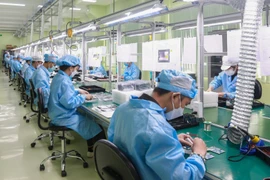Data from the national science and technology portal showedthat as of the end of 2023, Vietnam had recorded more than 5,500 chip designengineers. Meanwhile, the country needs 5,000-10,000 engineers each year, but itshuman resources supply capacity is only less than 20%.
Semiconductor products have been defined by the Government asone of the nine national products in the country’s efforts to actively engagein the Fourth Industrial Revolution.
With an investment increase seen in the semiconductor industryrecently, Vietnam can become a partner of many big countries in the field.
A report by Technavio predicted that the Vietnamesesemiconductor market may expand about 6.5% each year in the 2021-2025 period. However,human resources shortage has been the greatest challenge of the industry.
According to the Ministry of Education and Training (MoET),currently, Vietnam has 35 tertiary training establishments capable of providingsemiconductor training programmes, but the number of experienced ones is few.
MoET Deputy Minister Hoang Minh Son said that humanresources shortage is one of the major factors making investors hesitate topour their money into Vietnam.
He stressed that along with support from the State, trainingfacilities should actively cooperate with businesses and investors in humanresources training, developing the labour market and attracting moreinvestment.
Son said that the MoET is building an action plan to speedyincrease the quality and quantity of human resources in the field of semiconductor,especially IC design engineers.
The most important task is to promote the capacity of trainingfacilities, especially the quality of lecturers and infrastructure system, heunderlined.
He also stressed the need to attract students to thearea of semiconductor, and reaching cooperation agreements between tertiarytraining facilities with businesses and localities in the field./.




























